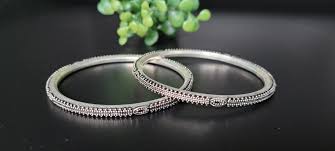History of Kundan Polki jewellery

History of Kundan Polki jewellery
The history of Kundan Polki jewellery can be traced back to the Mughal era in India, a period of great prosperity and cultural richness. During this time, the art of jewellery making in India reached new heights of innovation and creativity, and Kundan Polki jewellery emerged as a true symbol of wealth and prestige.


The art of Kundan jewellery making was brought to India by Mughal emperor Akbar in the 16th century, who was known for his love of luxury and opulence. Akbar had a passion for fine arts, and his court was a hub of creativity and artistic excellence. It was during his reign that the art of Kundan jewellery making was first introduced in India. The Mughal emperors were great patrons of the arts and they provided a fertile ground for the development of the jewellery industry in India.
Kundan jewellery is named after the process of setting uncut diamonds into gold, a technique that originated in the Rajasthan region of India. The word “Kundan” is derived from the Sanskrit word “Kund” which means “pure” or “refined”. The technique of Kundan jewellery making involves creating a frame of gold or silver, into which uncut diamonds are set. The diamonds are set into the frame using a process called “Kundan” or “Kundankari”, which involves securing the diamonds in place with a mixture of lac and gold. The lac acts as an adhesive, holding the diamonds in place and allowing them to be secured without the use of prongs or claws.
The art of making was perfected in the early 17th century, during the reign of Mughal emperor Jahangir. Jahangir was known for his love of beauty and luxury, and he encouraged the development of the jewellery industry in India. It was during his reign that it became synonymous with royalty and nobility. The Mughal emperors and their courtiers were the main patrons of Kundan jewellery, and they commissioned elaborate pieces that were adorned with precious gems and pearls.


The technique of Polki jewellery making, which involves the use of flat diamonds instead of uncut diamonds, was also developed during the Mughal era. The term “Polki” is derived from the Hindi word “Polak”, which means “ball”. Polki diamonds are flat diamonds that have been cut and polished to enhance their brilliance. The process of cutting and polishing flat diamonds was introduced in India in the early 18th century, and it quickly became popular among jewellery makers. Polki diamonds were often used in combination with Kundan jewellery, and the two techniques were merged to create exquisite pieces of jewellery that were adorned with a variety of precious stones and pearls.
Kundan Polki jewellery continued to flourish in India during the 19th century, despite the decline of the Mughal Empire. The jewellery industry in India became more diversified, and new styles and techniques were developed to meet the changing tastes of consumers. The British colonial era had a significant impact on the Indian jewellery industry, as it led to the introduction of new materials and techniques from Europe. The use of gemstones and enamel became more widespread, and the traditional designs of Kundan Polki jewellery were fused with Western styles to create unique and innovative pieces.
The 20th century saw a renewed interest in traditional Indian jewellery, and Kundan Polki jewellery once again became popular among Indian consumers. The Indian independence movement of the 1940s and 1950s led to a revival of interest in Indian culture and heritage, and this was reflected in the arts and crafts of the country. Indian designers and artisans began to explore new styles and techniques, and traditional forms of jewellery making such as Kundan Polki

Here are some additional points to add to the history of Kundan Polki jewellery:
- Kundan Polki jewellery was not only popular in India, but also found its way to other parts of the world, particularly the Middle East and Central Asia. Traders from these regions would visit India to purchase Kundan Polki jewelry, which they would then sell in their own markets. This helped to spread the popularity of Kundan Polki jewellery beyond India’s borders.
- The process of Kundan jewellery making is a highly skilled and intricate art that requires a great deal of expertise and precision. It involves several stages, including creating the frame, setting the stones, and finishing the piece. The process is time-consuming and labor-intensive, which is why Kundan Polki jewelry is considered to be one of the most valuable forms of Indian jewellery.
- Kundan Polki jewellery was often worn by Indian royalty and nobility, particularly during special occasions such as weddings and religious festivals. The jewellery would be adorned with precious stones, pearls, and other decorative elements, and would be passed down from one generation to the next as a family heirloom.
- In the 20th century, Kundan Polki jewelry saw a resurgence in popularity due to the efforts of Indian designers and fashion houses. They began to incorporate Kundan Polki jewellery into their collections, and this helped to bring the art form to a new generation of consumers. Today, Kundan Polki jewelry is a popular choice for Indian weddings and other special occasions, and is often paired with traditional Indian attire such as saris and lehengas.
- While Kundan Polki jewelry has a rich history in India, it has also faced challenges in recent years due to the availability of cheaper, mass-produced jewelry from other parts of the world. Many Indian artisans and designers are working to keep the art of Kundan Polki jewellery alive by creating new and innovative designs that appeal to modern consumers. They are also experimenting with new materials and techniques, while still keeping the traditional elements of Kundan Polki jewellery intact.




